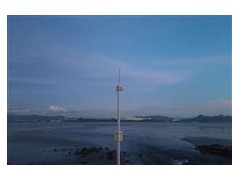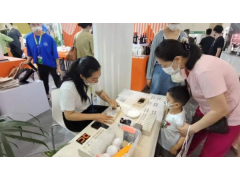Take the cane on the left and the paddle on the right to walk a new path
The production of Buddha reporter station planning/coordinating Xie Hong
Article/Photo Yang Yuanying, All Media Reporter of Yangcheng Evening News (except byline)
The dragon God holding the paddle printed with "downwind" and "downwater", the Jade Rabbit holding the gold ingots in his hand, the ox God holding the thumbs up... In everyone's mind, what are the door gods in the New Year pictures? It is believed that in most people's hearts the door god is serious and powerful, but in Shunde Museum in Foshan City, there are New Year pictures that are not quite the same as the tradition.

From January 16 to February 25, the "Carving for the Future - Shunde New Year Picture Spring Festival Exhibition" was held in Shunde Museum, displaying 48 pieces (sets) of Magang engraving printing works, including five screens of traditional woodcut printing showing excellent skills, as well as new forms of New Year pictures and comics, such as "Financial resources are wide, heavy sugar cane" and "Dragon is flying all over the world, All industries are flourishing". Many works also add dragon boat paddles, orange and other local elements. Attracted many citizens to stop and watch.
From the verge of loss to new works continue to emerge, from the dust on the island to step by step to the public... Recently, a reporter from Yangcheng Evening News walked into Magang Printmaking workshop to visit how this intangible cultural heritage with strong vitality was created. What is the story of the people who inherited this skill?

Trace to the source
Exquisite craftsmanship than "Su Ke"
Every household is rigid
In the middle period of the Qing Dynasty, Guangzhou and Foshan became the key places for printing. Engraving, lettering and printing formed a huge industrial chain, and the division of labor in each link became more and more detailed. At the same time, the demand for manpower was also increasing. In this process, engraving is the most difficult, time-consuming and costly. To this end, the bookshops of the two places sent the editions abroad.
At that time, Magang, located in Ronggui, Shunde, had frequent exchanges with the two places and was the route through which many merchant ships had to pass. Magang people learned that Guang Buddha had a large demand for the book edition, and felt that it was a good business, so they returned to the village and began to do engraving books. Gradually, the Guangfo Bookstore came to the door one after another and entrusted Magang with "outsourcing".
At the same time, the Annals of Shunde County mentioned: "Suzhou calligrapher often brought books into Guangdong and sold them in book shops. After the value, then carry the manuscript to Magang stereotype. Engraved (not under the ink brush printing) that carries Jiangnan, Jiang paper printing distribution in the sea, see that Su plate." Jiangnan businessmen to the south found that Shunde Magang carving not only cheap and skilled comparable to "Su carving", Magang carving gradually spread far and wide, attracting more businessmen to buy.

Jin Wuxiang, a poet in the Qing Dynasty, wrote in his Essay on Suxiang: "There are many bookboards in Jiangxi and Guangdong provinces. Jiangxi carving, in Jinxi County Xuwan; Guangdong carving, in Shunde County Magang." Magang engraving reached its peak in the middle and late Qing Dynasty, and almost every household in the local area would hear the stereotyped voice. It is worth mentioning that many women also joined Magang engraving, learning the stereotyping technique and completing the board.
At that time, the Magang people came back from Guangfo, first looking for artists and skilled carving workers to draw words and drawings, and then transcribe them on the board, leaving a boundary and then carving one by one.
"Magang engraving has a wealth of printed materials in addition to books." Wu Guolin, vice chairman of Foshan Writers Association and inheritor of Magang engraving printing technology, introduced that Magang engraving is mainly based on popular books, such as Tongsheng, almancalendar, there are also enlightenment textbooks such as "Three-character Classic", and some entertainment books, such as wooden fish books, etc., in addition to the year of the year's common prints, such as wood engraving pictures, paper horses, etc.

develop
Digging, protecting and inheriting skills
Printmaking transition to a new life
In 2004, Wu Guolin to create a novel "silk city dream" need to interview self-combing female, introduced by a friend to know the Magang Peng Guichan mother-in-law, learned that Magang old there are many women engaged in engraving, to further understand the "sleeping" years of Magang engraving printing skills.
It was also from this year that Wu Guolin and his team carried out a lot of field investigation, data collation, collection and creation of Magang block printing techniques, and successively wrote and published relevant papers and books. "Before 2004, there was almost nothing to be found about Magen block printing, and we had to find it bit by bit."
In 2008, with the support of the Publicity and Sports Office of the Ronggui Sub-district Office, Wu Guolin set up the Magang Printmaking workshop at the Rongcheng Art Museum, hoping to explore, protect, inherit and develop this art. At that time, because the only surviving Magang woodcut inheritor Peng Guichan was old and unable to teach his skills to his apprentices, after her death, the traditional skills of Magang woodcut printing may encounter faults.
Wu Guolin recalled the initial situation of the studio, a dozen young people from art schools were full of enthusiasm to create, but because they did not understand the carving, ink, tools and so on, the engraved version was completely different from the previous samples. In the face of various situations and problems in reality, many people come and leave. "In my opinion, the biggest problem in these decades is the brain drain. Many people are trained from scratch, stay for a few years and then leave for various reasons."
Fortunately, after more than ten years of exploration and attempts, the masters who stayed in the workshop became more and more skilled and experienced. "In 2012, we were invited to the Shenzhen Cultural Expo to set up a stall display, which attracted a lot of people's attention, interest and love." For Wu Guolin, this year became the biggest turning point for this intangible cultural heritage cause, and people from Zhongshan, Dongguan and other places invited them to local exhibitions.
At the same time, Mr. Wu drew inspiration from court prints of the Qing Dynasty: "Engraving books may no longer be useful, but the illustrations in engraving books, the traditional woodcut prints, are still alive and well in the art world." The illustrations in the books are separated, so that the engraving woodcut illustrations turn to the transitional printmaking art of the new era.
In order to further innovate and develop Magang prints, Wu Guolin and his team did not stick to black and white, turned the picture into color, and replaced the traditional vermilion that is easy to set with ink, which is convenient for production.

Future
The Times make traditional printmaking change
Full of "Shunde flavor" New Year pictures

"I didn't expect this year's works to be so popular. A few days ago at the exhibition, two people from Chencun liked the New Year picture "Good Luck, All the Best" very much, and said that it was the first time to see Shunde New Year oranges incorporated into the New Year picture." Wu Guolin said proudly.
This New Year painting with local elements is not his first attempt this year. Wu Guolin and his team spent 4 years to complete the 48 works (sets) of Magang block printing technology that participated in the exhibition. The first attempt to combine Magang prints with woodblock New Year pictures was made in 2020.
Not only that, Wu Guo-lin also incorporated Lingnan customs such as sugar cane and dragon boat paddles, as well as Cantonese idioms such as "smooth wind and smooth water" into his works. "Usually in the New Year pictures, the door God holds a broadsword and his posture is more powerful. I want to make a new meaning, replacing the broadsword with a boat paddle and sugar cane, and then changing the door god to the 12 Chinese zodiac animals, with a cartoon style." He said that the design of this year's Dragon picture has been changed four times, and the drawing board took 10 days to carve.
On the day of the reporter's visit, Qian Xuequan, master of Magang Printmaking Workshop, was "working overtime" to print a batch of New Year pictures. He began to study in 2017, from having no art foundation to now becoming a "skilled craftsman" on his own, he said that the more he immersed himself in it, the more he understood the more he liked this traditional culture, and he was happy to let more people know about it.
When it comes to his future plans, Wu Guolin is full of confidence and motivation. "This year, we will create 12 sets of zodiac New Year pictures and renovate the old ones." He believes that if intangible cultural heritage wants to gain more people's attention, it needs to constantly innovate and develop, create works with Lingnan flavor, awaken the historical and cultural identity and self-confidence in the hearts of the public, and promote the sustainable development of the countryside. He said that in the future, New Year pictures will be put offline, and they will be painted on walls and so on.
It is worth mentioning that in December 2023, "Magang block printing technology" entered the public list of Foshan intangible cultural heritage projects.

Editor: Yan Zhechuan






